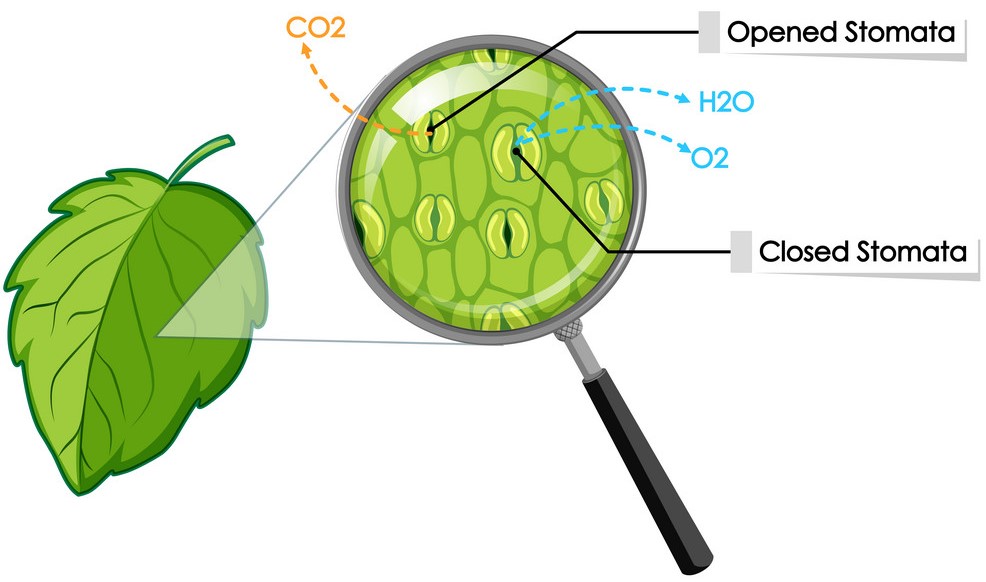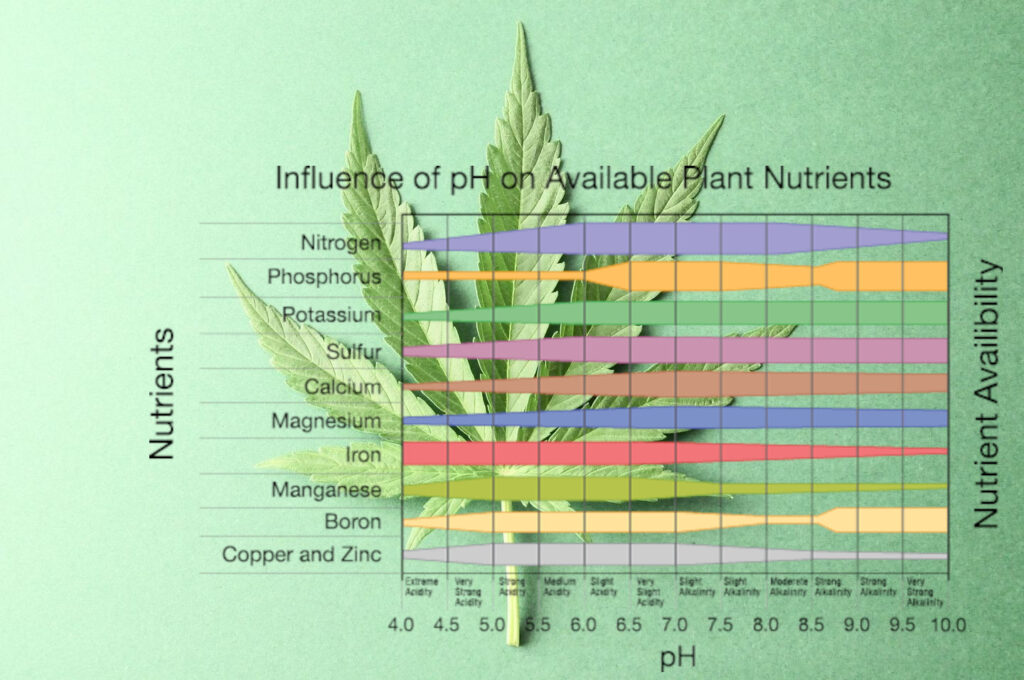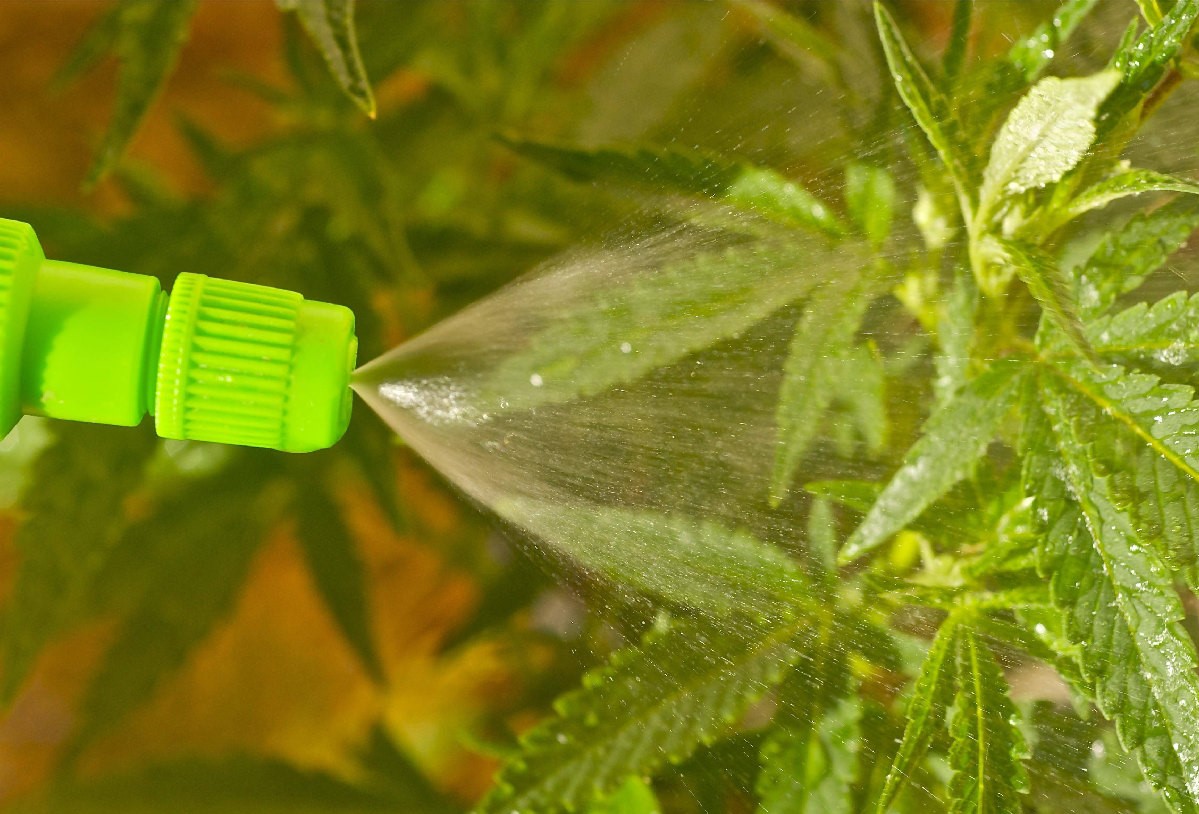You have grown a beautiful plant and you are just about ready to send it into flowering. But then it happens: something is wrong with the plant. Leaves change colour and fall off, the plant looks sickly and does not grow as it should: diagnosis of nutrient deficiency! If a deficiency is diagnosed, you don’t want to waste valuable time. Quick help is needed to save the plant. Otherwise, you will accept losses in the final yield and in the worst-case scenario, you will lose the whole harvest. However, there is a secret way to get plants back on their toes in record time: foliar fertilization.
What is foliar fertilization
Foliar fertilization is best suited for the fastest possible solution to the symptoms of a weed growing deficiency. It is recommended regardless of whether you are growing organically or minerally.
This fertilization method involves administering nutrients with a spray gun in a fine spray or mist. This works because plants take in nutrients through their leaves as well as their roots.
On the leaves, especially on the underside, there are small pore-like openings, the so-called stomata. With these, plants can absorb nutrients and water directly. With foliar fertilization, one can avoid the “detour” of the uptake of nutrients through the roots. Urgently needed nutrients can be supplied quickly and directly. This takes a little longer with conventional fertilization. However, if valuable time is lost in remedying the deficiency, the yield suffers.

Foliar fertilization is also an option if for any reason the addition of fertilizer to the medium is not possible or not desired. One of the advantages is that with foliar fertilization, the nutrients and minerals administered do not over-salt the earth.
Most of the commercially available NPK fertilizers can be used for foliar fertilization. Fertilizers that are rich in nitrogen and micro-minerals are particularly suitable.
*It is important that only mineral fertilizers are used for foliar fertilization. Organic fertilizers do not work here because the nutrients are in a form that cannot yet be used. These only work in organic soil.
Benefits of foliar fertilization
- Fast & effective. With foliar fertilization, you can quickly supply plants with the nutrients they need. These are then immediately available to the plant as they do not have to be taken up through the roots. Almost all nutrients (95%) are absorbed by the plant during foliar fertilization, which makes this fertilization method very efficient. Ideal for quickly eliminating deficiency symptoms. A direct supply of nutrients without the “detour” via the roots can help to avoid greater damage to the plants. When time is a critical factor, for example when growing autoflowering strains, correcting the deficiency quickly is especially important.
- Allows nutrient supply even with root problems or problems with the medium. Foliar fertilization is advisable when normal fertilization is not possible or not desired. For example, in the event of pH problems with the medium, root problems (“root rot”) or after flushing the plant due to over-fertilization. The advantage here is that foliar fertilization does not accumulate any further salts in the soil.
Combining foliar fertilization with normal fertilization
The conventional addition of fertilizer to the water or to the nutrient solution can also be combined with foliar fertilization. But then be careful not to over-fertilize! (You can find out more about the recommended dose for foliar fertilization below).
In mineral cultivation, initial foliar fertilization bridges the time (2-3 days) that the plant needs to absorb nutrients from the medium with the roots. After that, the plant already draws enough nutrients from the soil so that foliar fertilization is no longer necessary.
In organic cultivation, in particular, foliar fertilization is a good way of eliminating deficiencies. This allows you to provide first aid quickly, while at the same time enriching the earth with organic components.
With most organic fertilizers, only a small part of the nutrients (30%, e.g. with BioBizz) are immediately available to the plants, i.e. they are in mineral form. However, it takes one to two weeks for the complete fertilizer to be converted into nutrients. This normally makes the addition of organic components less suitable for quick remedial action.

In which cases should foliar fertilization be avoided.
In nature, plants do not take up nutrients through their leaves. That’s what the roots are for. Foliar fertilization is more of an option to compensate for disturbances in the natural absorption of nutrients. Foliar fertilization is therefore not an alternative to natural nutrient absorption.
Important: Foliar fertilization should never be carried out when it is too hot or too sunny, i.e. not in the middle of the day. The best time to do this is either in the early morning or in the evening or, if growing in a grow box, just before the lights go out.
Reason: This avoids a “lens effect” from water droplets, which could burn the leaves in strong light.
Furthermore, in cool temperatures in the morning or in the evening, the stomata of the plants are open so that nutrients can be absorbed. At higher temperatures, however, these are closed and the plant would hardly absorb any nutrients.
*Very important: Do NOT spray buds when they are in bloom under any circumstances. Otherwise, chemicals in the fertilizer or mould could spoil your harvest.
What you need for foliar fertilization
In principle, all mineral NPK fertilizers (mineral fertilizers, complete fertilizers) for growth and flowering are suitable for foliar fertilization. The selection is not tied to the current stage of the plant. Depending on the deficiency, you can also give a flower fertilizer in the growth phase over the leaves, for example in the case of an acute phosphorus or potassium deficiency.
You need:
- NPK fertilizer
- if necessary fertilizer additive such as CalMag, PK fertilizer or mono fertilizer.
- Small hand spray bottle or pressure sprayer
Depending on the specific deficiency, fertilizer additives can also be sprayed onto the leaves either isolated or mixed with an NPK fertilizer.
Which fertilizer or additive to use for foliar fertilization depends on the deficiency symptoms. For example, if you have an acute phosphorus deficiency, you can use flowering fertilizers. Or if there is an acute calcium deficiency, CalMag can be sprayed onto the leaves. Mono fertilizers can also be used to combat certain specific deficiency symptoms in isolation.
The sprayer should be able to produce a fine mist. A garden pressure sprayer with a manual pump is recommended. With it, you can treat several plants quickly and easily. A small spray bottle is sufficient for a few plants.
Foliar fertilization and normal fertilizer addition essentially differ only in the method of administration. Both methods can be used to give the plants the nutrients they need. If you use mineral fertilizers or fertilizer additives (CalMag etc.), you can also use them for foliar fertilization in many cases. If you only fertilize organically until now, you have to buy a suitable mineral fertilizer.
Proceed:
- Prepare fertilizer and water in the correct concentration. If unsure, as a rule of thumb, use 25-50% of the recommended dose. Less is more!
2. Mix well and add nutrient solution to the spray bottle.
3. Spray the leaves on the plant evenly with a fine mist so that the leaves are thoroughly wetted with the nutrient solution. Only spray so much that the plants are about to drip.
4. In particular, also spray the underside of the leaves. Most of the stomata are located there.
After spraying the plants, you should make sure there is a good supply of air to avoid mould formation. Give the plants 1-2 hours to absorb the nutrients through the leaves. If necessary, position the fan and, if necessary, set it to a higher level. It is important that the sprayed plants do not remain moist for a long period of time (mould!).
As soon as the symptoms improve, the addition of the mineral fertilizer can be reduced again or stopped entirely. In the best case, the foliar fertilization is carried out a maximum of 2-3 times, as a kind of quick help. At the same time, you should correct the fertilization of the growing medium so that the plants have enough nutrients around the roots after the foliage is finished.
How long should you actually do foliar feeding?
Here it is important to know that foliar fertilization cannot replace normal nutrient uptake through the roots. For example, foliar fertilization can only add small amounts of trace elements to the plant. This makes them ideal for eliminating deficiencies, but unsuitable for normal, healthy plant growth.
For this reason, foliar fertilization should only be used for a short period of time. Ideally only until the plant has recovered and can absorb nutrients in the normal way via the roots. A few applications over a period of a maximum of 1-2 weeks are usually sufficient for this. If a deficiency has not yet been remedied, there is in all probability a major problem (poor soil, problems with watering, diseases, insects, etc.) for plant growth.
What else needs to be considered
It is important to know that foliar fertilization is not a definitive solution even if there is a lack of nutrients. It is mainly used to quickly remedy the symptoms in affected plants.
The main cause, such as the lack of a nutrient in the soil, must also be remedied in any case. That means you have to add the respective nutrient to the medium. This can be done with commercially available NPK fertilizer. If you grow organically, you can enrich the earth with appropriate organic components.


Your article helped me a lot, Thanks!
I am so thrilled I found your website,
I really found you by accident, while I was searching for something else, Nonetheless
I am here now ɑnd would just like to say kudos for an incredible post and an interesting bloɡ.